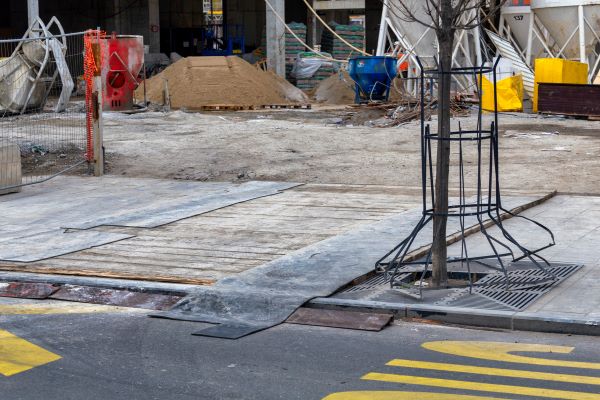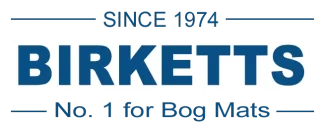A Comprehensive Guide to Bog Mats

If you’re looking for a reliable and durable solution for working on wet or uneven ground, timber bog mats may be the answer. These versatile mats are made from high-quality timber and are designed to provide a stable and secure surface for a variety of applications, from construction sites to gardening projects. With their excellent grip and resistance to rot and damage, timber bog mats are quickly becoming a go-to choice for professionals and DIY enthusiasts alike.
In this article, we’ll take a closer look at everything you need to know about timber bog mats, including their features, benefits, and uses. Whether you’re a contractor, landscaper, or homeowner, this guide is packed with valuable information to help you make informed decisions and get the job done right.
Bog mats are dense, rectangular mats made from a variety of materials such as wood, plastic, or composite materials. They are designed to provide a stable and durable surface for workers, vehicles, and equipment in wet, muddy, or uneven terrain. Bog mats are commonly used in construction, landscaping, and environmental conservation projects where traditional access methods are not feasible or safe.
Bog mats play a crucial role in ensuring safety and efficiency in various industries. In construction, they provide a solid base for heavy machinery and workers, preventing sinkholes and accidents. In landscaping, they enable the creation of beautiful gardens and outdoor spaces by providing a stable platform for plants, pathways, and hardscapes. Additionally, bog mats help protect the environment by reducing soil erosion and promoting sustainable development.
Timber bog mats offer several advantages over other materials, including their durability, stability, and versatility. They can be reused multiple times, making them a cost-effective option, and they are easy to install and maintain. Additionally, timber bog mats are biodegradable and environmentally friendly, making them a sustainable choice for construction and landscaping projects.
History of Bog Mats
Timber bog mats have a rich history dating back thousands of years. The earliest known use of bog mats was by ancient civilisations in Mesopotamia, Egypt, and Greece, who used them to build homes, temples, and other structures on soft, marshy ground. These early bog mats were made from natural materials like papyrus, reeds, and wooden planks, which were placed on top of the soggy soil to create a stable foundation.
Over time, the design and materials used in bog mats evolved to suit different environments and building techniques. In medieval Europe, for example, bog mats were used extensively in castle construction, with large timbers being placed on top of the moat to create a solid base for the walls and towers. During the Industrial Revolution, bog mats became more widespread and standardised, with factories producing them en masse for use in railroad construction and other infrastructure projects.
Today, bog mats continue to be an important tool in construction and landscaping projects. Modern bog mats are made from a range of materials, including pressure-treated timber, recycled plastic, and composites. They come in a variety of sizes and shapes to suit different applications, from small garden paths to large commercial developments.

Applications of Timber Bog Mats
Timber bog mats have a wide range of applications across various industries, including construction, landscaping, and environmental conservation. In the construction industry, bog mats provide foundation support for buildings, bridges, and other structures, helping to distribute weight evenly and prevent settlement. They also serve as effective drainage solutions, allowing water to flow freely beneath the mat while keeping the surrounding area dry. Access roads and work platforms built on bog mats facilitate the movement of heavy machinery and personnel, improving site accessibility and safety.
In landscaping and gardening, bog mats create stable pathways and walkways, enabling people to traverse wet or uneven terrain without sinking or slipping. Driveways and parking areas constructed on bog mats provide a firm, level surface for vehicles, reducing rutting and wear. Tree protection and planting on bog mats helps to preserve root systems and promote healthy growth, while also preventing damage to surrounding soil.
In environmental conservation, bog mats play a vital role in wetland management, controlling erosion and stabilising soil. They provide a platform for scientists and researchers to study fragile ecosystems without causing damage. Wildlife habitats built on bog mats offer shelter and protection for animals, helping to preserve biodiversity and promote ecological balance.
Purchasing vs Renting Bog Mats:
Pros and Cons
Pros of Buying Timber Bog Mats:
- Ownership: Once you purchase timber bog mats, you own them outright, giving you complete control over their usage and longevity.
- Long-term savings: If you plan on using the bog mats frequently or for an extended period, buying them may be more cost-effective in the long run.
- Customisation: You can choose the specific type of timber, size, and thickness that suits your needs, ensuring optimal performance and efficiency.
- No rental restrictions: There are no limitations on the duration or frequency of use when you own timber bog mats, giving you greater flexibility in your project planning.
Cons of Buying Timber Bog Mats:
- High upfront costs: Purchasing timber bog mats requires a significant initial investment, which may not be feasible for all budgets.
- Storage and maintenance responsibilities: After the project is completed, you will need to store and maintain the bog mats, which can add to your expenses and logistical burdens.
Pros of Renting Timber Bog Mats:
- Lower upfront costs: Renting timber bog mats typically requires a smaller initial payment compared to purchasing, making it easier on your budget.
- Flexibility: Renting allows you to use the bog mats only when needed, eliminating storage and maintenance concerns.
- Variety: Rental companies often have a range of bog mat types and sizes available, allowing you to choose the best option for your specific project requirements.
Cons of Renting Timber Bog Mats:
- Recurring costs: Although the initial rental fee may be lower, continued use of timber bog mats over time can lead to higher overall costs due to recurring rental charges.
- Limited customisation: Rented bog mats may not always be available in the exact size, thickness, or type of timber that you prefer, potentially affecting performance.
Factors to Consider When Deciding Between Buying and Renting
- Project scope and duration: Assess the length of your project and the number of bog mats required. If you need them for an extended period or have a large project, buying might be more economical. For shorter projects or those requiring fewer bog mats, renting could be the better option.
- Budget constraints: Evaluate your financial situation and determine whether a lump sum payment for purchasing or ongoing rental fees are more manageable for your business.
- Future usage plans: Consider whether you will require timber bog mats for future projects. If so, buying may be a better investment since you can reuse them. However, if you don’t anticipate needing them again, renting would be more practical.
- Maintenance and storage capabilities: Assess your resources for storing and maintaining timber bog mats after the project ends. If you lack space or resources for proper upkeep, renting may alleviate these concerns.
- Logistical advantages: Weigh the benefits of having full ownership and control over the bog mats (buying) against the convenience of having them delivered and picked up at the end of the project (renting).
- Cost-benefit analysis: Perform a detailed comparison of the total costs involved in buying versus renting, taking into account factors such as duration of use, maintenance, storage, and transportation. This will help you make

How to Install and Maintain Timber Bog Mats
Before laying the timber bog mats, ensure the site is level and clear of debris. Remove any vegetation, rocks, or other obstructions that could interfere with the installation or performance of the mats. Compact the soil to create a stable base for the mats. Begin by laying the first mat along the edge of the wetland area, ensuring it is aligned with the direction of water flow. Use a spirit level to check the mat’s alignment and secure it to the ground using suitable fasteners, such as stakes or screws. Repeat this process for each additional mat, overlapping them slightly to create a seamless barrier.
Once all the mats are in place, secure them to the ground using the chosen fastening method. Make sure the mats are firmly anchored to prevent shifting or displacement during use. It’s also essential to ensure that the mats are secure enough to withstand wind, waves, and water currents.
Regularly inspect the timber bog mats for signs of wear, damage, or deterioration. Check for loose or missing fasteners and tighten or replace them as necessary. Ensure that the mats remain free from debris and vegetation growth, which can weaken their structure and compromise their effectiveness. Finally, perform regular cleaning and maintenance tasks to keep the mats in good condition and extend their lifespan.
Timber bog mats offer an effective and eco-friendly solution for managing wetlands, improving site accessibility, and protecting the environment. With their durability, versatility, and cost-effectiveness, they are an excellent choice for various industries and applications. We highly recommend considering timber bog mats for your next project.
Don’t miss out on the benefits of timber bog mats for your next construction, mining, or environmental management project. Contact Birketts Bog Mats today to learn more about their availability, pricing, and customisation options.






